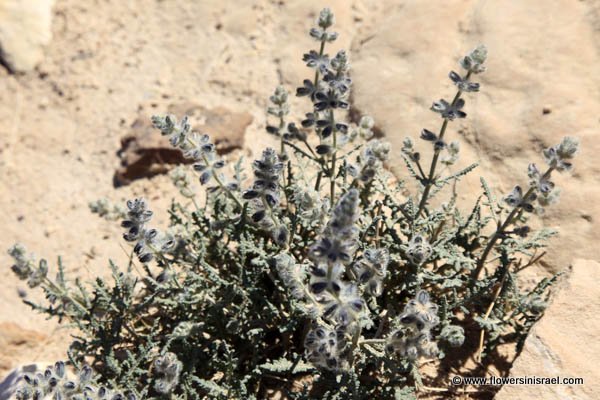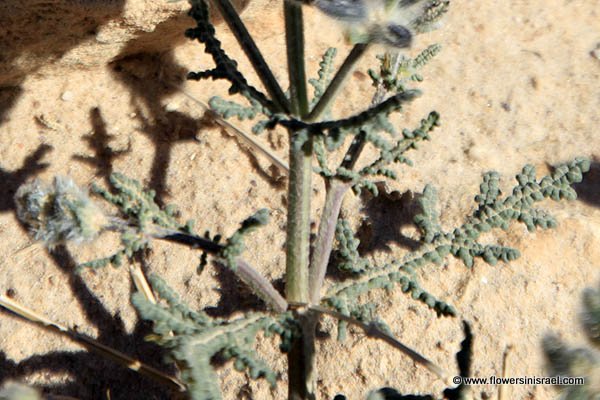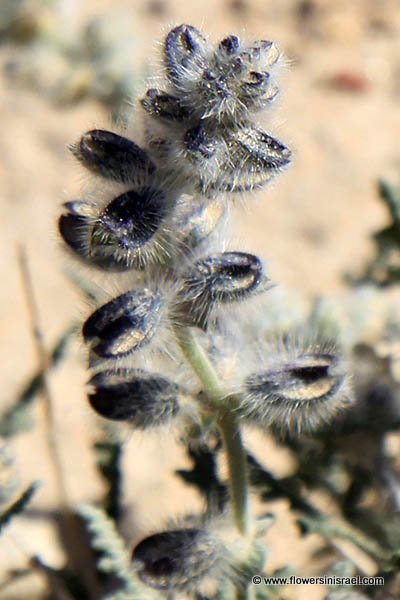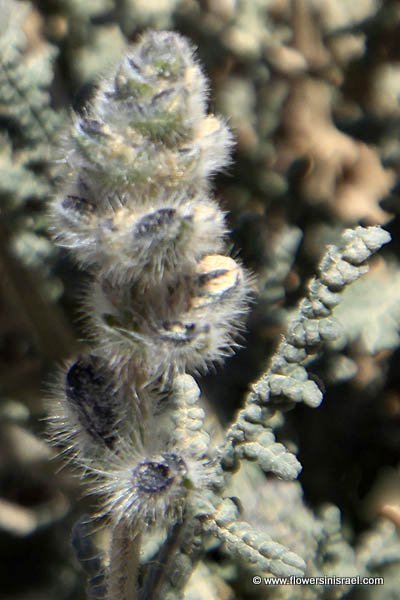Hebrew: מרוות המדבר, Arabic: ميريميه
| Scientific name: | Salvia deserti Decne. | |
| Common name: | Desert Sage | |
| Hebrew name: | מרוות המדבר | |
| Arabic name: | ميريميه | |
| Plant Family: | Labiatae / Lamiaceae, שפתניים |

|
| Life form: | Chamaephyte, a subshrub | |
| Stems: | Up to 10-15cm | |
| Leaves: | Opposite,entire, grey lanate, dentate or serrate, no stipule | |
| Flowers: | Hermaphrodite, white, dark blue | |
| Fruits / pods: | Achene-like nutlets, single-seeded | |
| Flowering Period: | March, April | |
| Habitat: | Desert, Thermophilous plants | |
| Distribution: | Deserts and extreme deserts | |
| Chorotype: | Saharo-Arabian | |
| Summer shedding: | Perennating |

Location: Makhtesh Ramon (Ramon Crater), Ha-Minsara (The Carpentry Shop) Derivation of the botanical name: Salvia, Latin salvere, to save, referring to the long-believed healing properties of salvia. Pliny the Elder was the first known to use the Latin name salvia. deserti, of or from the desert. The Israeli botanists Dr. Ephraim and Hanah Hareuveni pointed out that the architecture of the vertical inflorescence of this species of Salvia resembles the shape of the Menorah, in particular—the Salvia Palaestina. Therefore, they suggested that it had inspired the design of the Menorah. Moreover, based on etymology perspectives they suggested that the Hebrew word “Marva, מרווה” (Salvia) was originated from the Hebrew word “Moriah” (the Temple Mount name), reflecting the connection between this plant and the Menorah, which was situated inside the Holy Temple in Jerusalem.

Location: Makhtesh Ramon (Ramon Crater), Ha-Minsara (The Carpentry Shop) 
Location: Makhtesh Ramon (Ramon Crater), Ha-Minsara (The Carpentry Shop) |